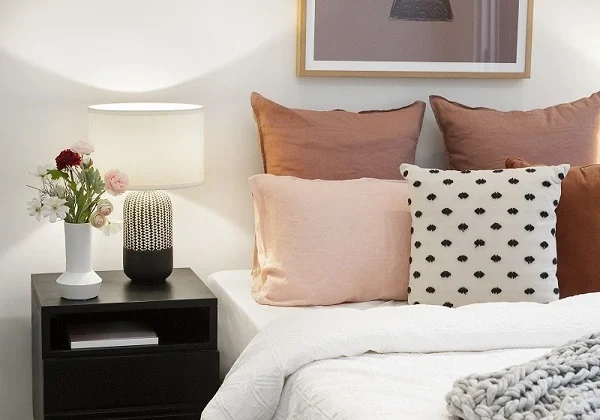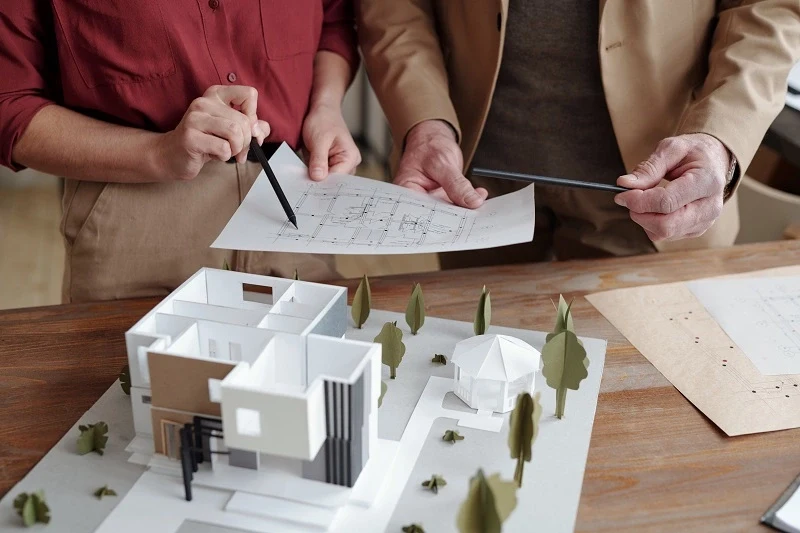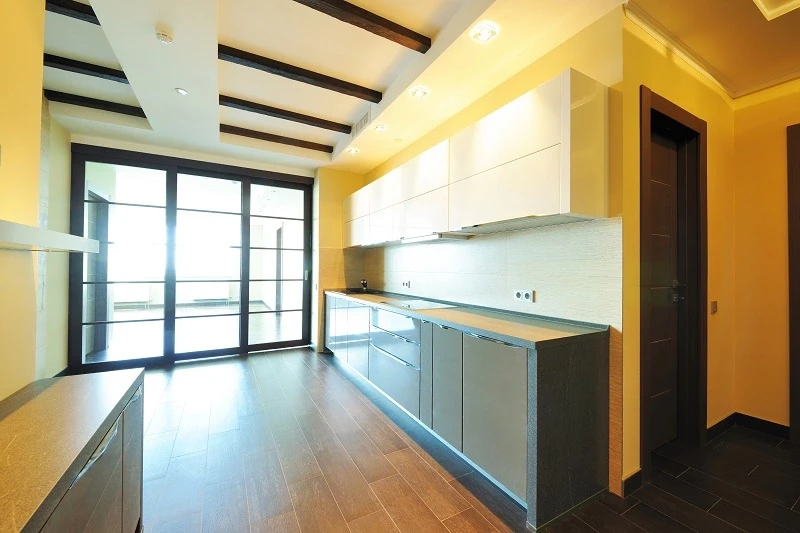How to Read the Floor Plan and Drawings of a House?

As an amateur with little or no understanding of floor plans, the geometric diagram may seem like simple lines put together to form different shapes. Though, as you gain a deeper insight and understanding of the floor plan, you will realize that the diagram reveals much more than what you can actually understand by visiting the empty site, while the construction is underway, or even after seeing the sample flat. Understanding the floor plan and drawings of your house is easy once you have an idea of what each part of the diagram represents.
The term Floor Plan is used to refer to a scale drawing that gives you a lot of information about the house. It tells you the size, area, structure, location of the door, window and stairs, the air circulation pattern, the room layout etc., as viewed from above. This form of drawing is often used by architects and designers to visually comprehend if the space is suitable for its intended purpose, failing which, redesigning is undertaken before moving forward to the next step, which entails the elaborate planning or building stage.
BASIC ELEMENTS OF A TYPICAL FLOOR PLAN
Though there are many elements represented in the floor plan there are a few basic ones on which the entire floor plan is based, such as:
-
Scale
Here scale is used to refer to the degree in which the entire space can reasonably fit on a screen or a piece of draft paper. For example: The scale used can be in the ratio of 1:10. In this case, 1 unit on paper represents 10 units in actual. An understanding of scale is important when reading the floor plan.
-
Dimension Lines
Measurements on the floor plan that show the length of items in reality for example the length of a window, door, wall etc.
-
Room Types, Furniture and Appliances
These will include the types of rooms, the furniture, basic appliances and accessories. It could even showcase the outdoor garden layout, if applicable.
UNDERSTANDING THE FLOOR PLAN
As a home buyer, viewing and understanding the floor plan of the property you are interested in is important for various reasons. Some of them are:
- The floor plan gives you an idea about the dimensions of the home so that you can assess whether the property is suitable for your needs.
- It helps you visualize the room layout to understand how one room is interconnected to another.
- It allows you to understand how your present furniture and appliances will fit into the space given, the kind of furniture or appliances you will need to procure and, in some scenarios, understand the structural alterations to the property, such as knocking down walls or creating an extra room, in consultation with the builder.
- The floor plan also provides details of the direction of the house so that you able to understand the amount of sunlight and fresh air that you will get. Structural changes can be undertaken if you like the property and it does not interfere with the look of the exteriors. Such changes will have to be communicated to the builder in advance, post which the architect would be consulted.
- It furnishes you with the information required to consult a Vastu expert who will see if the floor plan is suitable for you and guide you to make changes, if necessary.
DECODING THE FLOOR PLAN
Since the floor plan is represented by various shapes and symbols, it is important to get a clear understanding of what each one represents. The list here will help you decode the floor plan with ease. While these commonly used conventions, certain special representations can be understood in close consultation with the sales team, architect or the builder.
-
Direction
The North is usually depicted in the floor plan using an arrow. This helps you understand the relative placement and orientation of the entrance to each room, which goes to highlight the amount of sun you will receive. Taking this into consideration, the placement of windows will further reveal if the house is well-ventilated.
-
Walls
The most important architectural element shown in the plan is the walls. Walls can be thick or thin depending on whether the diagram depicts the interior or exterior walls. On the floor plan, walls are represented by parallel lines with breaks, where windows and doors will be placed. The thickness of the lines symbolizes the thickness of the walls.
-
Doors and Windows
After the walls, doors and windows are the two important elements shown on the floor plan. Windows are most commonly shown with three parallel lines in a wall, while doors are depicted as a straight line perpendicular to a wall with an arc that connects this line to the wall. Showing a door like this helps understand which side has hinges so that you know which room it opens up into.
-
Stairways
In case of a bungalow or a duplex apartment, stairways will also be shown in the floor plan. Drawn as many parallel lines, a staircase will also have an arrow and a note indicating the direction of travel; up or down.
-
Furniture
Geometric shapes are used to represent furniture. The sizes mentioned give you a fair idea of the kind of furniture the room can accommodate. In the case of a non-furnished apartment, you can consult an interior designer who you will guide you, as per your requirements, whereas in the scenario of a fully-furnished apartment you can speak to the builder and request for changes, if required.
-
Plumbing
On the floor plan, the sink, basin, toilet, bathtub etc., are easily identifiable as they are represented by motifs similar to the ones in reality.
-
Water Inlets
Apart from the sink and toilets, appliances that will require water are placed near the available water inlets and outlets. Viewing these motifs on the drawings will give you a fair idea about the same.
-
Electrical Outlets
Floor plans with electrical outlets are necessary while applying for an electrical-wiring permit. Designers and architects use a variety of standard symbols to indicate the location of duplex outlets, wall-light outlets, switches, ceiling lights, wall-lights, fans etc. With the variety of options available today, a designer can use the same outlets and highlight or conceal the available outlets to place lights and switches at different locations, based on your needs.
FEW IMPORTANT CONSIDERATIONS
-
Master Plan and Floor Plan
Always assess a unit or floor plan with regards to the entire site or master plan. Viewing your particular building on the site map will add clarity to your understanding of the floor plan that you are interested in. The placement of the buildings, the views expected, the floor design, entries and exits etc. should be understood with respect to your building and floor.
-
Structural Members
While the structural members will not be marked on the floor plan, it is important to ask about them. The structural members of the house will determine if certain rooms will have offsets, how much space will be available for furniture placement or if some room will be suitable for some changes and space customizations. Thus, asking about the structural members’ specific to your unit is important.
-
Carpet Area and Room Dimensions
Be mindful of the overlapping spaces when looking at a floor plan. Considering the individual dimensions of the rooms, calculating the space enclosed by each and then adding all the dimensions of the rooms together will never be equal to the total carpet area quoted by the Sales team or Developer. The carpet area doesn’t account for the overlaps of the individual rooms and covers the complete space of the house. Understand the difference between the two for transparency.
-
Schedule of Doors, Windows and Openings
Asking about the doors, windows and openings schedule of the house is an important part of reading the floor plan. The dimensions of the doors, windows and openings are comparably observable on the floor plan; however, they are not mentioned. The size, width, opening direction and radius etc. are important to determine the way the openings will function and add ease to your lifestyle, daily navigation and usage.
Understanding a floor plan gives you clarity about what is offered, whether it suits your needs, if structural alterations are possible and needed and how to go about the same. Though a floor plan provides you an answer to most of these questions, it is always advisable to speak to the builder if you have any doubts regarding the drawings and any changes that you would like to implement, which would help you with your decision.









Ask a Question